Subscribe to our newsletter
How will technology shape research in the coming decade?

- The rising popularity of technologies such as the Internet of Things (IoT) offers interconnectivity of devices that is allowing us to gather data on an unprecedented scale
- 3D printing technology is offering labs the opportunity to create their own equipment at a greatly reduced cost
- For many researchers, data has already replaced the traditional theoretical hypothesis as the trigger point for a new research project. 4) Funders are not only scanning grant applications for signs of societal impact, many now want to see evidence of collaboration
Author Biographies

Inez van Korlaar is the Marketing Director for Dimensions. She has a PhD in Medical Psychology and joined Digital Science in September 2018. Before joining Digital Science she worked in scholarly publishing in a variety of publishing, marketing, and product management roles.

Cristina Huidiu is a product specialist for Dimensions and Altmetric and as a former librarian, is fascinated with data stories that can be used as strategic insights by research institutions.
Dusting off our crystal ball
As Digital Science celebrates its 10th birthday this year, Suze Kundu kicked off our birthday year in style with her January post on the game changers that have reshaped research over the past 10 years. So, the Dimensions team decided to dust off their crystal ball and attempt to uncover what the next 10 years may bring. Making predictions is never easy – particularly with the potential for unanticipated developments, such as the novel coronavirus, COVID-19. But mining Dimensions’ rich and interconnected data can certainly provide us with some useful clues.
You only have to glance through the publication, clinical trial, grant and patent data in Dimensions to see that a number of factors are likely to drive change in the coming decade. Many of these factors won’t come as a surprise – they are already key features of the research landscape. These range from funding challenges to evolving impact measures, and the rise in collaboration to the growth of open science. But if there is “one theme to rule them all”, it would have to be technology. Not only is it rapidly evolving in its own right, it is also empowering change at every stage of the research lifecycle.
Understanding the technology revolution
The rising popularity of technologies such as the Internet of Things (IoT) offers an interconnectivity of devices that is allowing us to gather data on an unprecedented scale. And now, thanks to increasingly sophisticated algorithms and advances in artificial intelligence (AI), we can interrogate that data in ways that were barely imaginable a few years ago. In fact, for many, AI is the technology with the greatest potential to truly transform research and society as a whole; as a result, it has become one of the fastest-growing research fields. We can see this reflected in the rise in AI-related Dimensions publications over the past 10 years (figure 1).
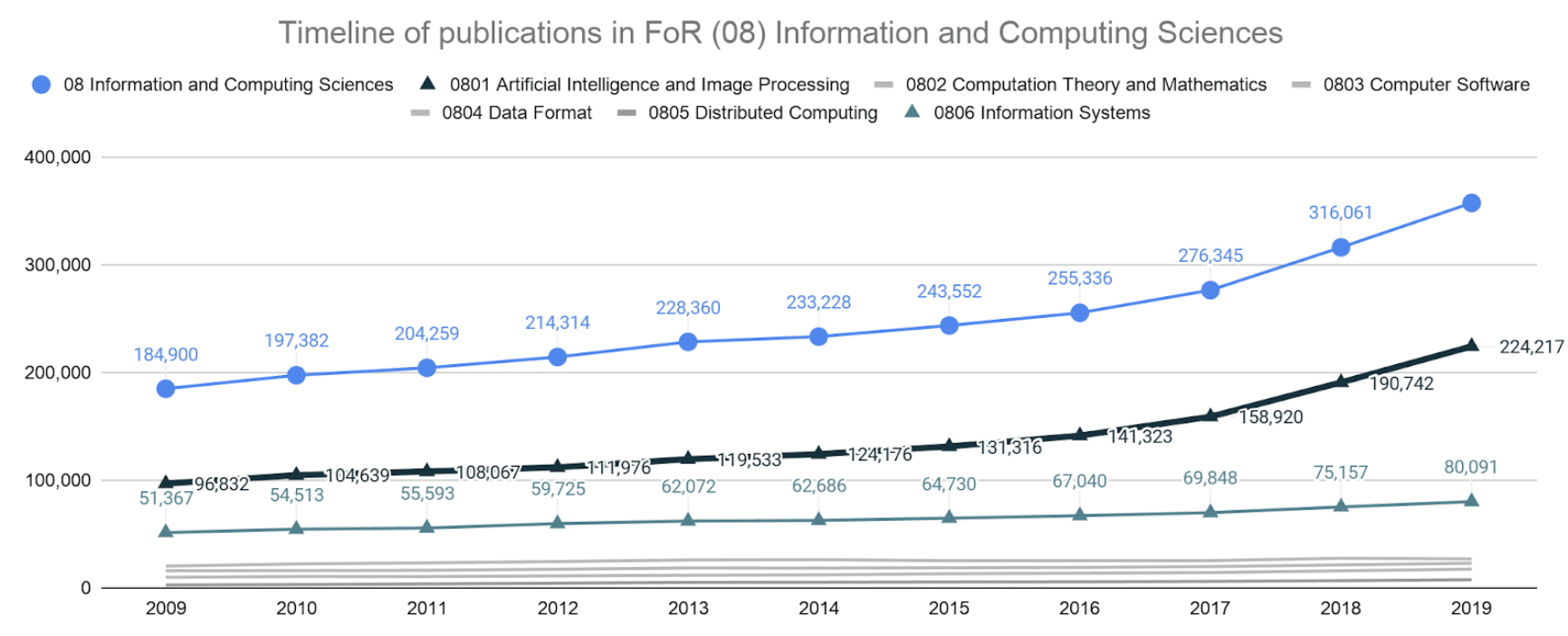
Figure 1: The publication growth for AI and image processing (a subcategory of Information and Computer Sciences) was 131.6% between 2009 and 2019. This compares to a total growth of 93.2% for all subcategories in Information and Computer Sciences over the same period.
At the same time, 3D printing technology is offering labs the opportunity to create their own equipment at a greatly reduced cost. These printers can even mimic human tissue and organs, creating the potential to reduce – possibly eventually eliminate – animal testing. Technology is also fuelling the automation of many labor-intensive lab processes, and can perform tests with greater speed and even accuracy than the humans it has replaced.
Then there’s augmented reality (AR), virtual reality (VR) and blockchain… the list goes on. All of these technologies are combining to fuel an enormous shift in what we research, how those experiments are conducted and how we access their results. Let’s take a closer look….
Driving decision-making
Increasingly, data is dictating the research agenda and that is not going to change. For many researchers, data has already replaced the traditional theoretical hypothesis as the trigger point for a new research project. Data generated by the Internet of Things network is also allowing researchers to monitor and manage experiments remotely and identify when a change of direction is needed. This trend will grow and, as the decade progresses, researchers will be called upon to enhance their data skills.
Data is also used to rate institutions, which, in turn, use it to understand and showcase their performance to potential funders, employees, students and collaborators. Importantly, funders use it to identify areas where their money is needed most and which researchers and institutions are likely to spend it wisely – and that push to spend money wisely will only increase in importance in the years ahead. Traditionally, the number of articles a researcher has published, how often those articles have been cited and the “quality” of the journals in which they appeared have proved crucial factors in securing funding and career progression. But, with much research funded by taxpayers, researchers are now under pressure to demonstrate that their findings will benefit those footing the bill.
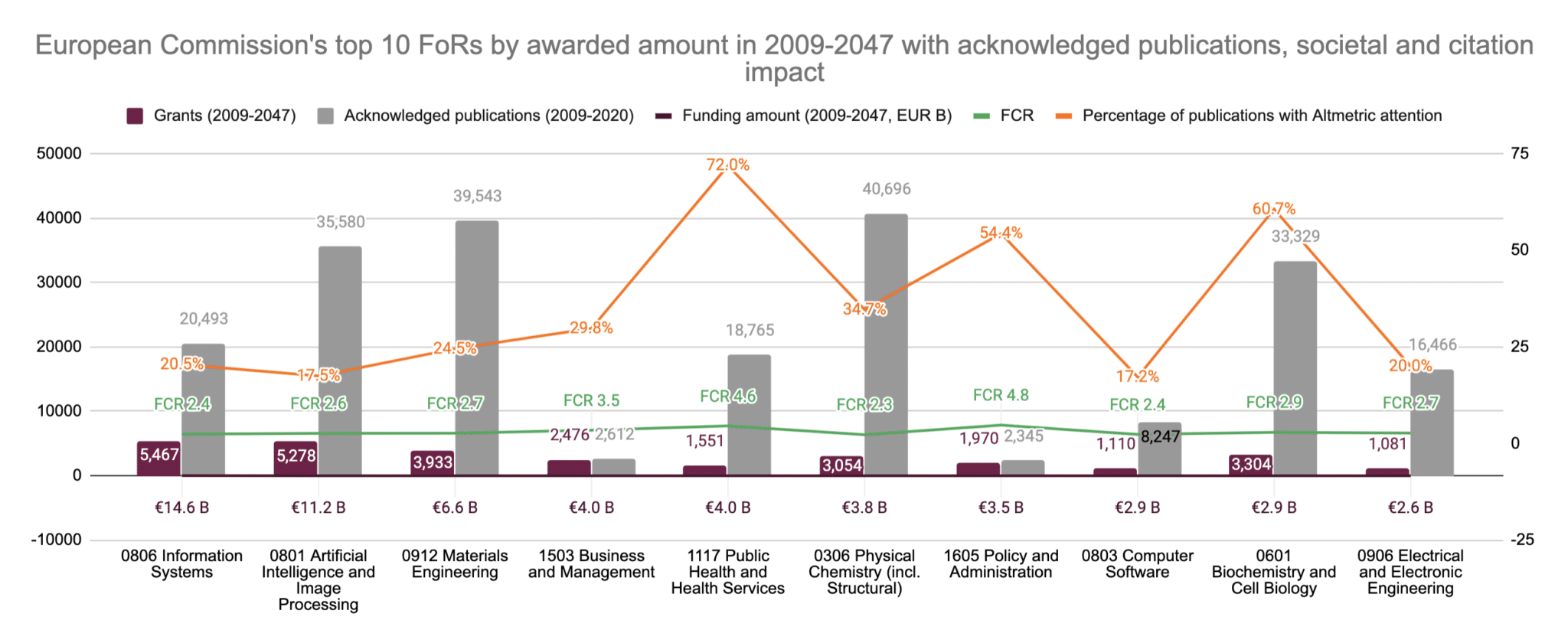
Figure 2: Active grants from 2009 to 2047 awarded by the European Commission:
The top 10 disciplines awarded funding have additional metrics such as overall number of grants, acknowledged resulting publications and the impact of those publications expressed through our field weighted metric, FCR. An additional layer of societal impact of the acknowledged publications is expressed through the percentage of publications with attention tracked by Altmetric.
The role of the United Nations’ Sustainable Development Goals (SDGs)
Global challenges are also feeding the demand for research with societal impact; for example, the ramifications of climate change (rising sea levels, natural calamities, refugees, food shortages, etc.) and an ageing population with its economic and health consequences. Increasingly, funding is aligned with the United Nations’ Sustainable Development Goals (SDGs). To help the community track research aligned with these goals, we’ve added a filter to Dimensions for all 17 SDGs (see figure 3).
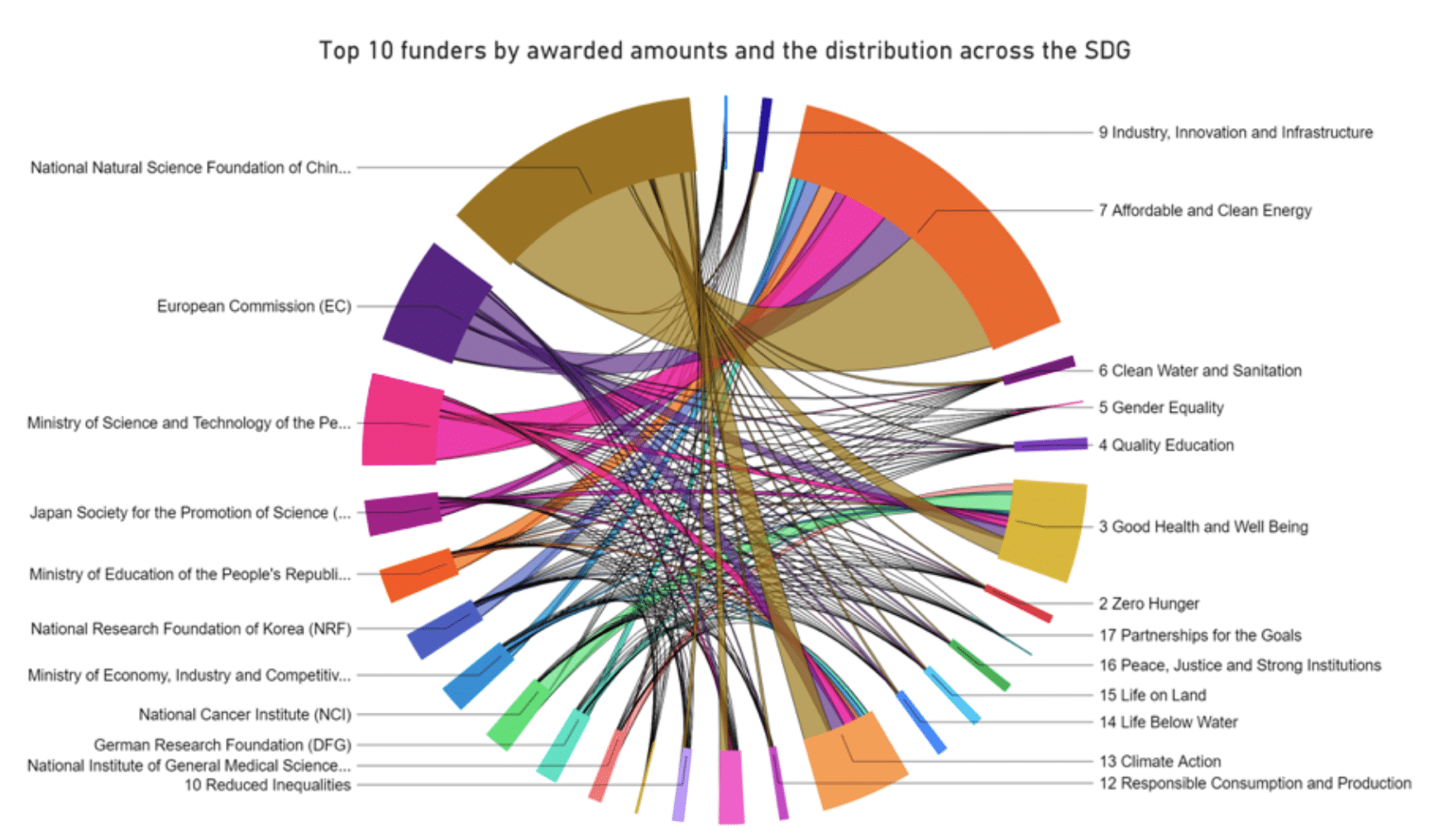
Figure 3: Allocation of grants by the 10 main funders to the 17 SDGs. The data, drawn from Dimensions, show that affordable clean energy has been awarded the highest volume of funding to date.
Technology is already fuelling these new ways of determining impact beyond scholarly citation, such as tracking usage and online mentions through altmetrics. The next step may be to leverage its potential to measure other aspects of research from how openly a researcher shares their data, to how easy their work is to replicate and its benefit to society.
We are also seeing new sources of funding emerge. With so many pressures on the public purse – a situation that is only likely to increase following the economic fallout of COVID-19 – philanthropists and industry are stepping up their investment in R&D. And for these groups too, technology will be in the driving seat. For example, the stated aim of the Bill & Melinda Gates Foundation’s multi-billion dollar fight against malaria is to reduce deaths through “improved data-driven decisions” and to build the systems and platforms required to achieve that goal.
Reshaping how research is conducted
Funders are not only scanning grant applications for signs of societal impact, many now want to see evidence of collaboration. These collaborations can take many forms; for example, institutional agreements spanning multiple countries and industry/academia partnerships to achieve shared goals. This pooling of knowledge and funds brings many benefits, especially for researchers in developing regions who may not have access to the same cutting-edge technology and equipment as their counterparts in research-intensive countries. It is also supporting a move towards mega-science, with initiatives such as CERN, the world’s largest particle physics laboratory – one of the first European collaborations, its ground-breaking technology is now available for use by research institutes all over the world.
Figure 4 uses Dimensions publications data to map the steady rise in collaborative projects over the past decade – we can expect to see this trend continue over the coming 10 years. In fact, the urgent need to respond to COVID-19 is likely to accelerate growth – only by working together and sharing knowledge can researchers and governments secure their nations’ health and economies.
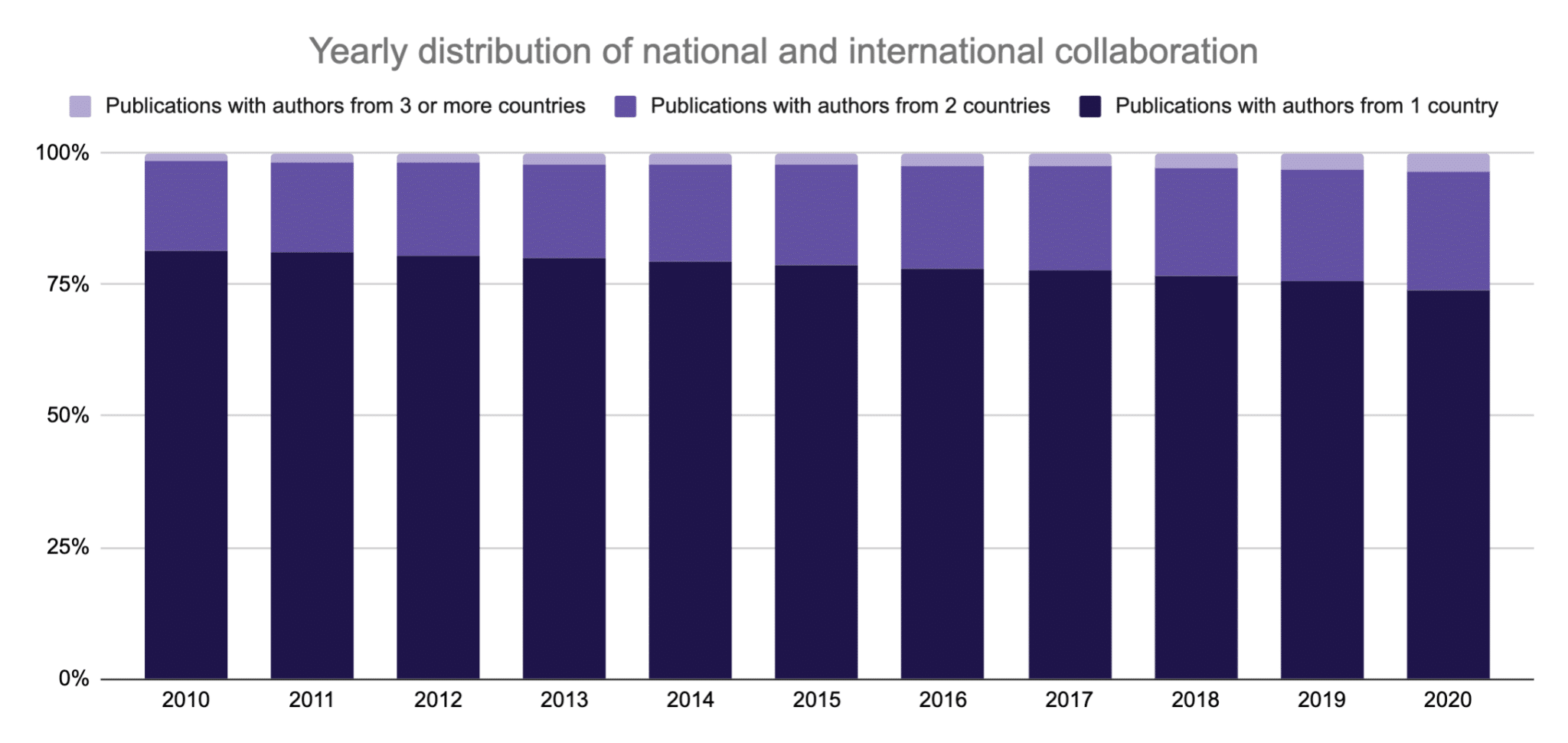
Figure 4: The percentage rise in collaborations between 2010 and 2020, based on Dimensions publications data.
And that growth in collaboration is likely to be evident across both open access and subscription publications, as figure 5 demonstrates.
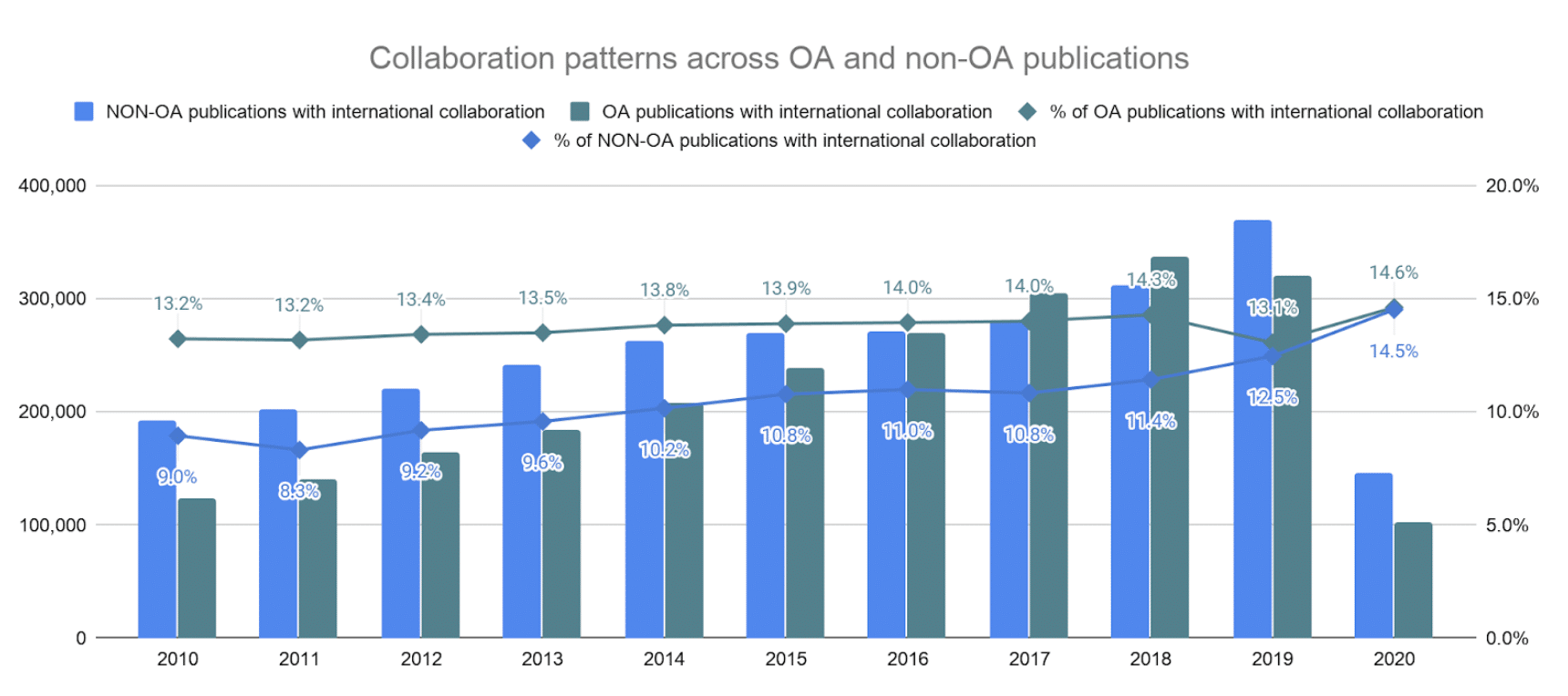
Figure 5: Collaboration patterns across open access and subscription publications between 2010 and 2020, based on Dimensions publications data.
This increase has been made possible by new tools to support sharing of large data sets, collaborative writing and online meetings; in many cases, collaborators will never even meet face to face.
Interdisciplinary science will also continue to grow in the years ahead. This rise will be driven, in part, by the complexity of the global challenges we face, which many feel can only be solved by the blurring of disciplinary borders. This too is being fuelled by technology as sophisticated algorithms and software help researchers discover and consume content outside their own fields.
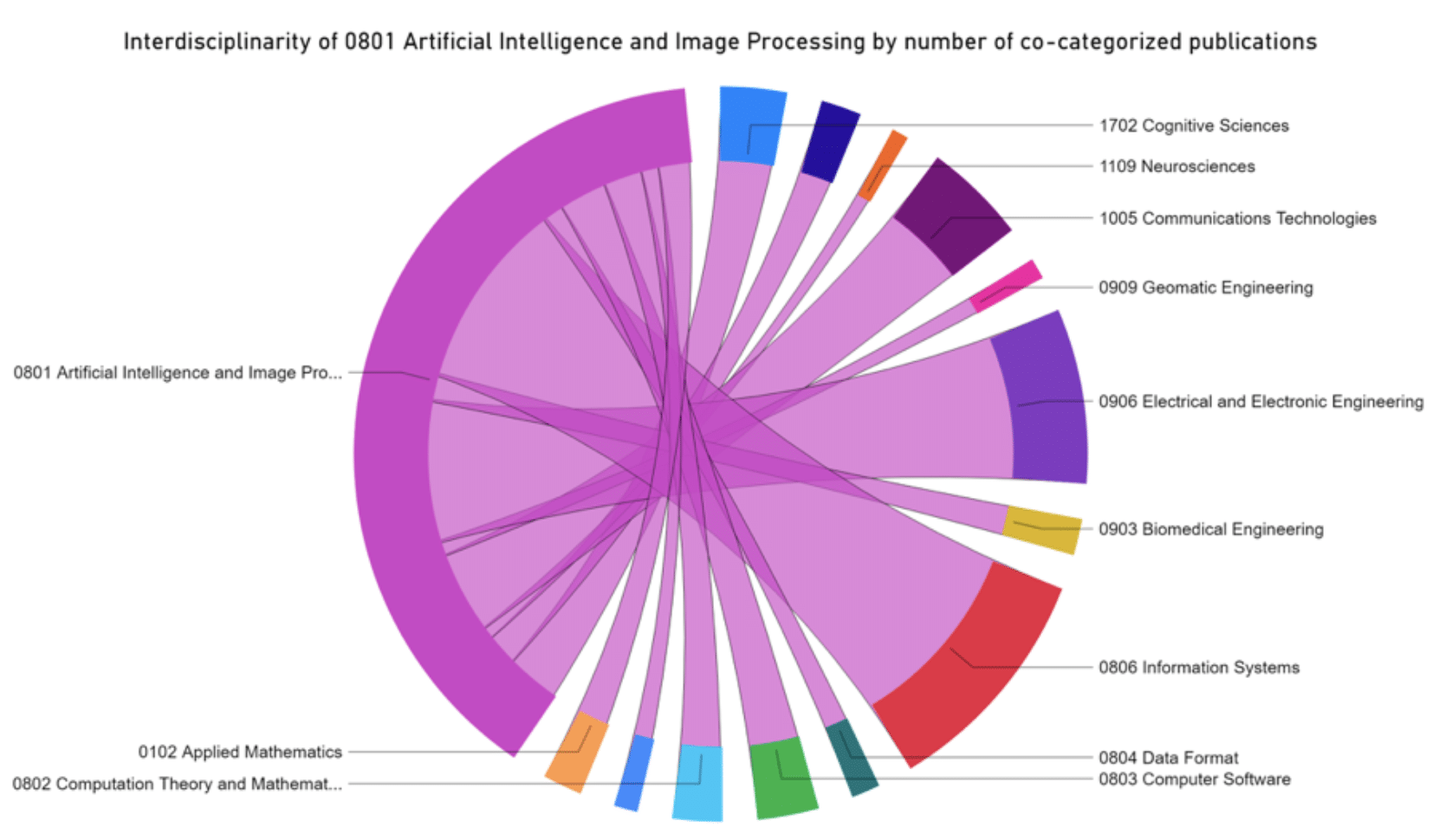
Figure 6: The interdisciplinarity of artificial intelligence research
As we touched on briefly earlier in this article, life within the lab and the lecture hall will continue to evolve thanks to technology, which offers the power to conduct lessons and experiments remotely, enhance our understanding in virtual or augmented environments, and so much more. It is likely that the need to find new ways of working prompted by COVID-19 will accelerate change in this area. It has already triggered more timely and collaborative ways of sharing knowledge in a bid to accelerate discovery; for example, we are making available all COVID-19 related published articles, preprints, datasets and clinical trials from Dimensions in one file, updated daily, which is free for anyone to access.
Revolutionizing access
Open science – including Open Access publishing – has been a major trend over the past decade and its importance will only increase (see figure 7). This move toward making science more transparent, accessible, and to share results as early as possible, is driven by many of the themes we’ve explored in this article, from a growing call for public accountability to the rise in global challenges.
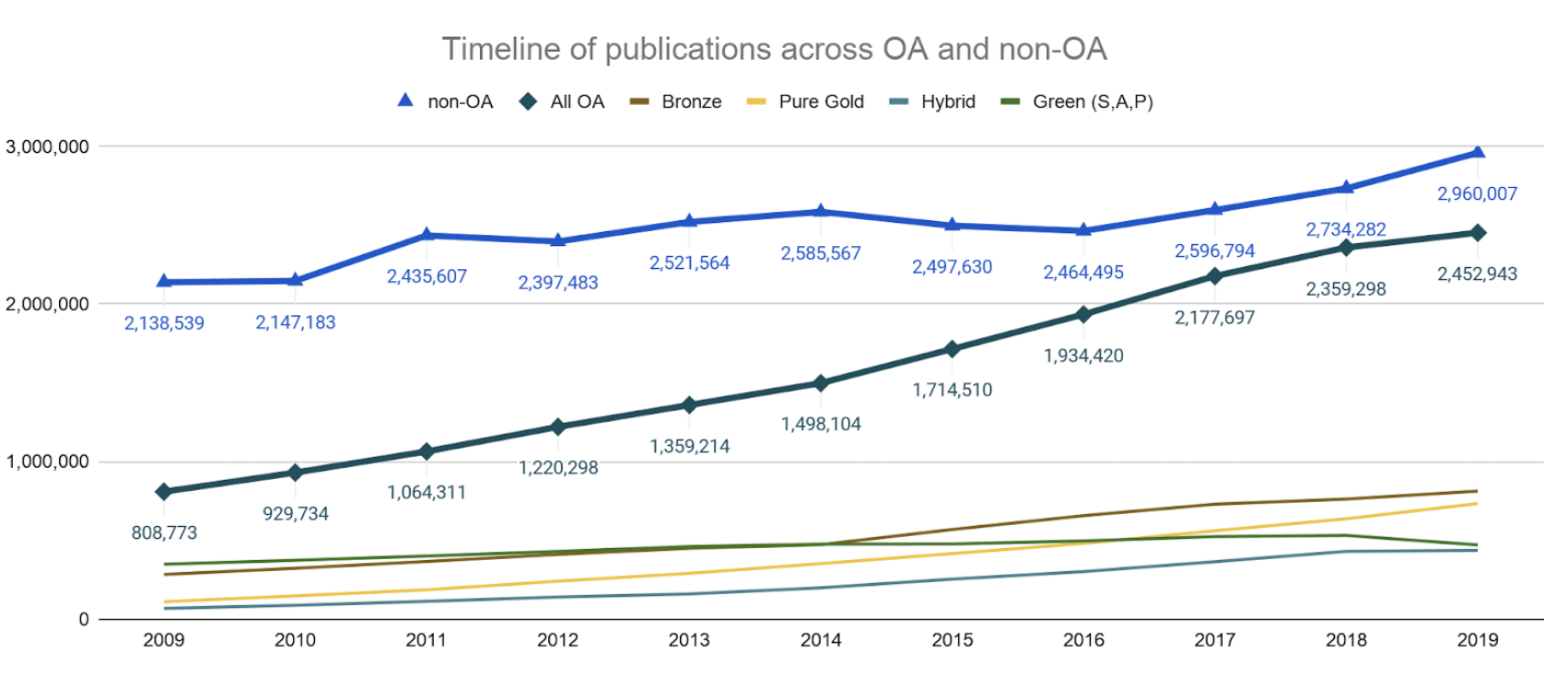
Figure 7: The volume of research published each year is rising. In this graph, which draws on Dimensions publications data, we can see that the growth of Open Access articles is accelerating at a faster pace than subscription publications.
Another factor is the perceived reproducibility crisis currently facing science, prompted by the worryingly high number of published scientific studies that are difficult, or even impossible to replicate. There is a belief that by sharing data and other elements of the research process more openly, the crisis will be resolved. This has resulted in the launch of new online solutions which host all stages of the research cycle from source code to data and software designs, such as Figshare. Datasets are also now available in Dimensions as a content type.
We’ve also seen the launch of preprint servers to support early sharing of results and online channels for the negative results and sound science papers that researchers have traditionally struggled to find a home for.
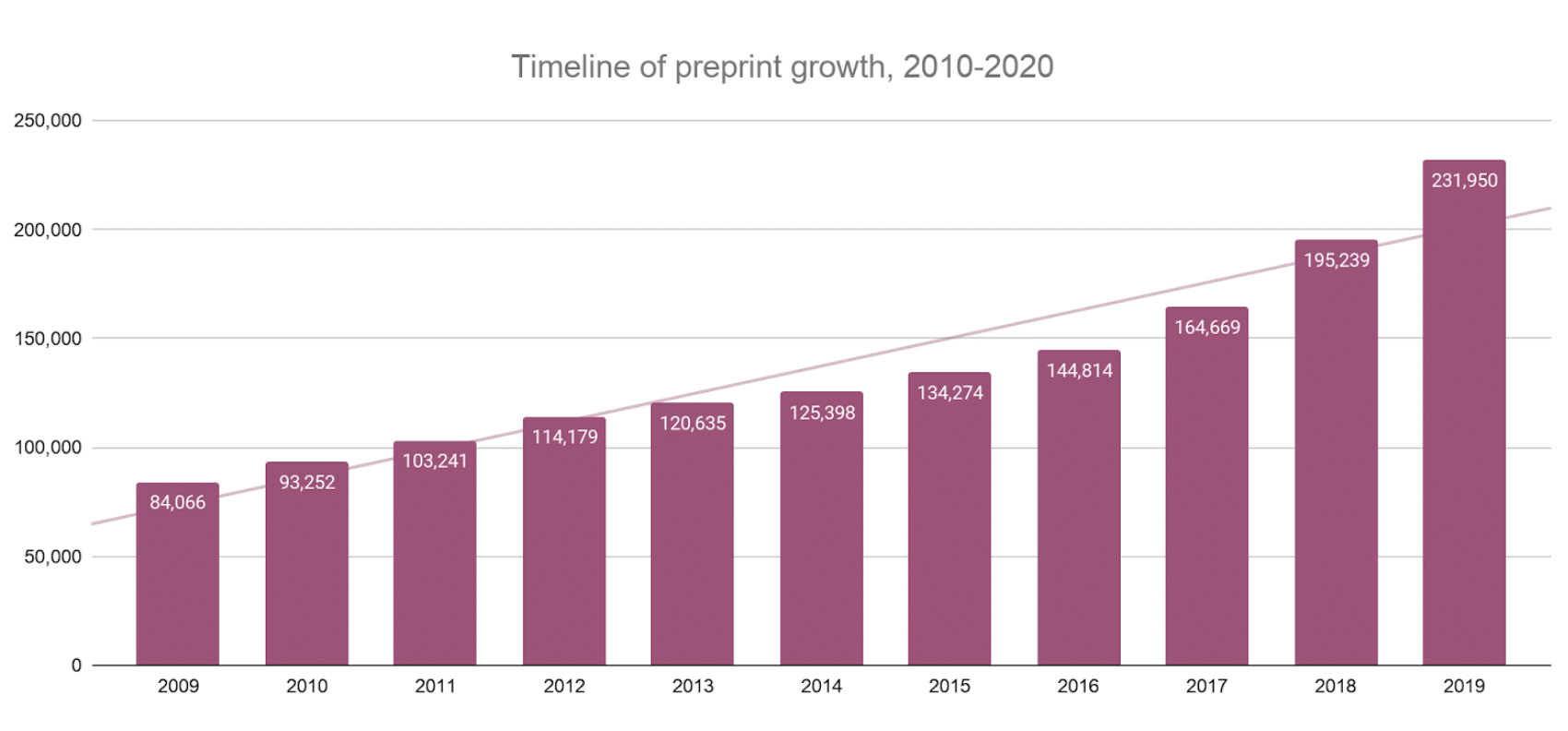
Figure 8: Preprint publications grew by more than 175% between 2009 and 2019.
These new platforms mean there is more content available than ever before. Many companies are leveraging technology to filter this sea of literature and use algorithms to track and understand researchers’ preferences. We can expect this software to become ever more sophisticated in the decade ahead.
There are other factors that will influence how research evolves in the coming decade from shifts in geopolitical power to developments that it’s impossible to anticipate today. However, what is clear, is that technology will play a key role, reshaping the research landscape in ways we have yet to imagine. There will be challenges along the way, ranging from ethical questions around AI to funding and political agendas, but with the shared passion for discovery that drives us all in the research community, we at Dimensions believe the future is filled with possibility!



